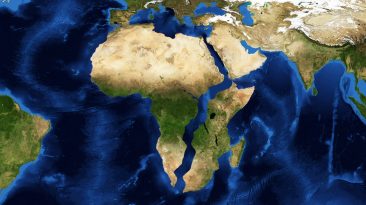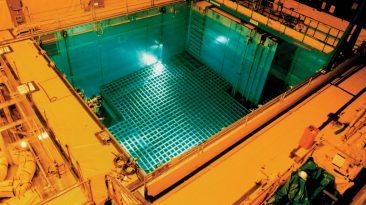In six hours, you, your government, and 124 million other people across 14 states will be tested by the greatest disaster to ever hit the U.S. East Coast. A great wave, 1000 meters tall (3280 ft.), moving towards you at 1000 km/h (620 mph), and that’s only the beginning.
Boston, New York, Philly, D.C., Miami. All underwater. And you?
Unlike most tsunamis that are triggered by tectonic activity, megatsunamis are caused by sudden impact. A huge chunk of debris, possibly a meteor, smashes the water, creating a huge wave, which might reach thousands of meters high.
The initial super wave would set off a chain reaction of smaller waves in all directions. But by smaller, we really mean they’d be about 100 meters high instead of 1000.
Depending on the size and location of the impact, and the speed of the waves racing towards you, you may get a few hours warning. But will that be enough time?
Welcome to La Palma, one of the 7 main Canary Islands, home to 81,000 people, and a giant, scary volcano. Suppose it erupts, and the eruption is big enough that it triggers a massive landslide.
Massive enough, to send over a billion tons of rock sliding into the ocean, causing… A megatsunami.
The initial wave is 914 meters (3000 feet) high. It surges upwards and outwards, setting off a chain reaction of deadly waves in all directions. In 6 hours, a series of 30 meter (100 ft) waves will batter the American East Coast.
Ramming speed: 900 km/h (560 mph). One of the 7 Deep-ocean Assessment and Reporting buoys floating along the Atlantic Coast will undoubtedly register this mega-displacement of water, giving the U.S. Tsunami Warning Center time to alert anyone who might be in danger.
The only problem is, that’s 38 percent of the American population. The entire U.S. East Coast would be affected, putting 14 states, and 124 million people, including key members of the government, at risk.
If you can’t make it out in time, then climb. In major cities, the newest and tallest skyscrapers would be the safest places to go. And your own safety will be entirely your responsibility, since emergency services wouldn’t really be able to take action until the onslaught was over.
In the best case scenario, you’ve managed to evade the disaster completely. Your family is safe, but your home, not so much.
Worse, you’re on the roof of a skyscraper, safe, with a group of survivors, waiting for a helicopter to come pick you up, which might take a very long time. But in the worst case scenario…
The death toll would be staggering; the economic impact, easily costing billions, if not trillions of dollars. It will take decades to rebuild, and yet, is it wrong to suggest that we might’ve gotten off easy?
How much worse would it have been without the 6 hours of advance notice? That’s right, you owe a big thank you to these supersmart buoys monitoring the coast, keeping you safe and dry, so that you can rest easy, and keep watching ‘What If.’
Subscribe to What-If on Youtube or follow the show on Facebook Watch.
Sources
- “Megatsunami”. 2018. en.wikipedia.org. Accessed April 21 2019.
- “Seismic safety wins a round in Trump budget battle”. Rong-Gong Lin, 2017. Latin Times. Accessed April 21 2019.
- “United States Of America USA Land Statistics And Landforms Hills Lakes Mountains Plains Rivers”. worldatlas.com. Accessed April 21 2019.
- “A theory of a “mega-tsunami” that wipes out the East Coast was widely debunked. Yet it persists.”. Pilot Online. Accessed April 21 2019.
- “Geographic Distribution Of U.S. Population – Theusaonline.Com”. A.U.C., Active. 2019. theusaonline.com. Accessed April 21 2019.
- ” La Palma | Volcano World | Oregon State University “. 2019. volcano.oregonstate.edu. Accessed April 21 2019.
- “Megatsunami Scenario – La Palma Landslide”. 2019. Youtube. Accessed April 21 2019.
- >“What If A Mega Tsunami Hit NYC?”. 2019. Youtube. Accessed April 21 2019.



























